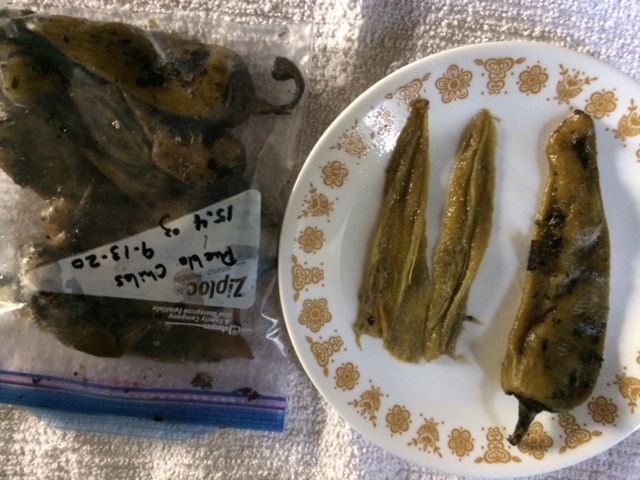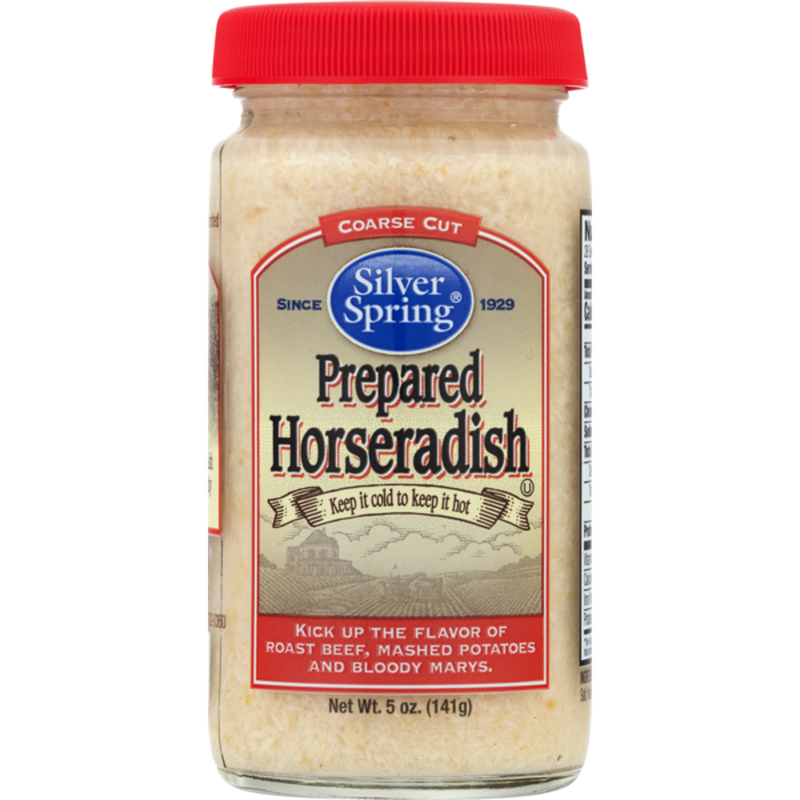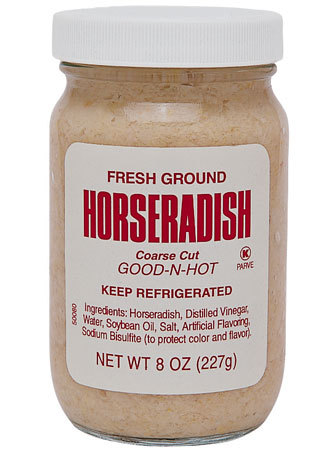- KETCHUP - No, do not use. As indicated before, a brat is not a hot dog. No self-respecting Wisconsinite would be found using ketchup on a brat.,
- YELLOW MUSTAND - no, no, and again no. Save it for a Chicago hot dog.
- BROWN MUSTARD - acceptable
- KRAUT - acceptable
- ONIONS - also acceptable, but don't be mincing them. Use coasely chopped onions. As in all ingredients in all dishes, size of pieces is a key. Here, we want surface area to volume ratio rather low.
And now for the truly stunning method of adorning brats. This is practiced nowhere that we know, except Bratfests. It was conceived sometime in the first decade or so of the Fest, and remains, in some opinons, as the best possible way to serve a brat: Forgot the mustard, kraut, onions, and all the rest and use only real (grated) horseradish and whole or sliced green chiles, as below:
- GREEN CHILES - highly recommended
OK, so who ordered THIS now? This was a unique Southwestern addition to top brats. It brings our own Tucson touch to the Fest. They truly cannot be beat. The idea is to add a whole or a few slices to the brat as a condiment. Again here, size/shape are key. Use a whole or sliced chiles, as in the pictures below. Do not chop or dice them.
As for other items, it is best if you can get them fresh. Whole roasted chile peppers can be found canned, but they will have little flavor. Most people will have access to Anaheim peppers, which is roughly the proper style. They can be roasted on the grill or over a gas flame on the stove until blackened, then stemmed, peeled, and seeded, and left whole or cut into strips.
In the early fall, chile stands can be found on street corners or even grocery stores in Colorado, New Mexico, and Arizona. Vendors with giant roasting cages will roast chiles for you on the spot. Hatch chiles, from New Mexico are probably the best known. They are an Anaheim and are not terribly hot, but are very good.
The best green chile we have encountered for this is the Pueblo Chile, grown near Pueblo, Colorado. It is a different variety from Hatch, similar looking, but more meaty and hotter, with tremendous flavor. They are outstanding for this purpose. They can be had at various farmstands in the area or at the annual Pueblo Chile Fest. Below are some acquired this year from Di Tomaso Farms. They are roasted in front of you --- a bushel for about $30. You can then freeze them directly. This shows one whole and sliced (use about 2 slices per brat).
 (click to enlarge)
(click to enlarge)
- HORSERADISH - highly recommended
Although Illinois claims to be the state producing the most horseradish, the largest single grower and producer of horseradish in the world is in Wisconsin, outside of Eau Claire: Silver Spring Foods, founded by German immigrant, Ellis Huntsinger, who began farming horseradish in 1929. The original farm is still in production. There are many other farms and producers of horseradish in the state; it enjoys a high popularity in Wisconsin, although it seems that we have been the only ones obviously advocating for use on brats.
You absolutely want to get the grated real horseradish, not the adulterated creamy stuff. Again, size of the grind is important, and here you want the "coarse cut" if you can find it. It is refrigerated for a reason --- it is fresh. Accpet no substitutes. Here are two of Silver Spring's products, to be found in the refrigerated section of the store, near the refrigerated pickles and kraut (often near hot dogs, pre-packaged cold-cuts, etc.):

 (click to enlarge)
(click to enlarge)
This horseradish is also useful if you have a cold and need to clear out your sinuses. As far as we know, it has not yet been suggested as a treatment for Covid, but it should be considered.